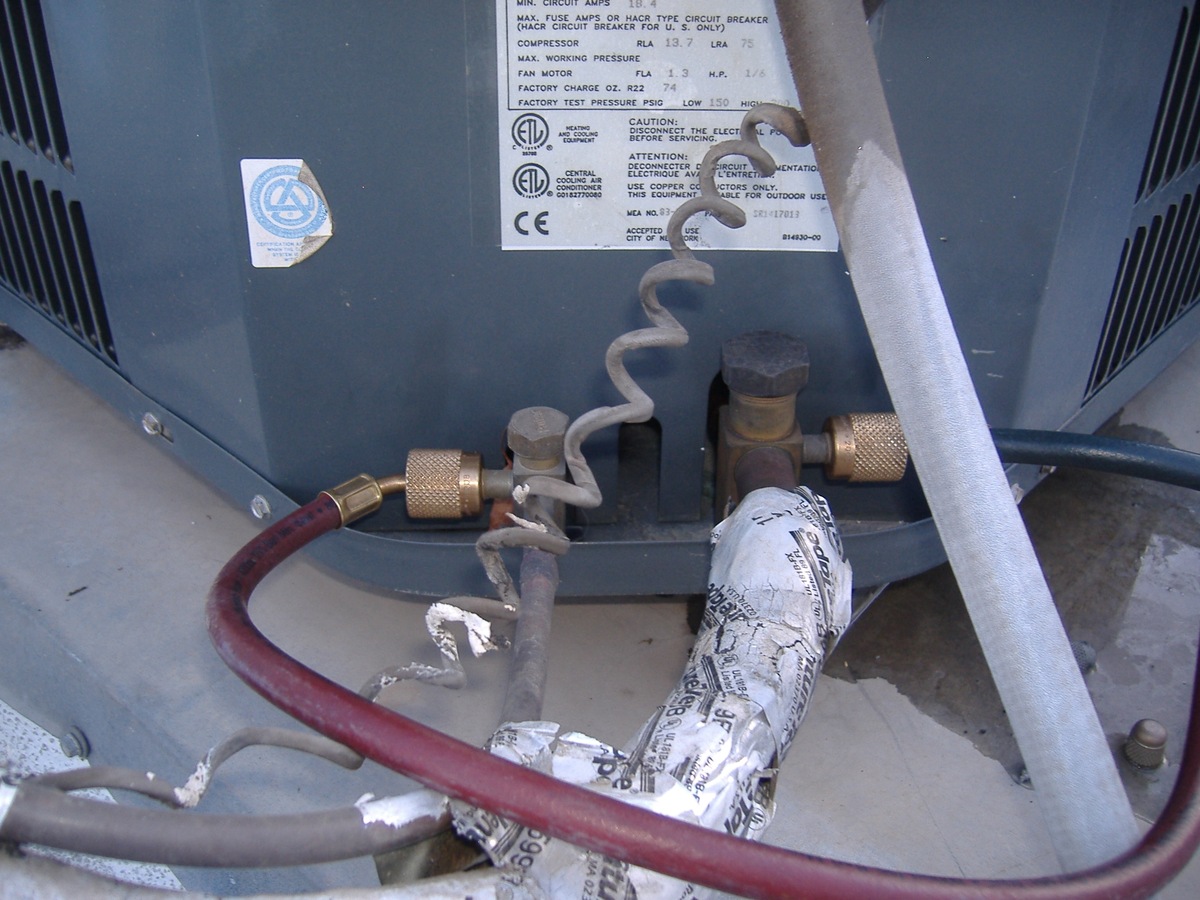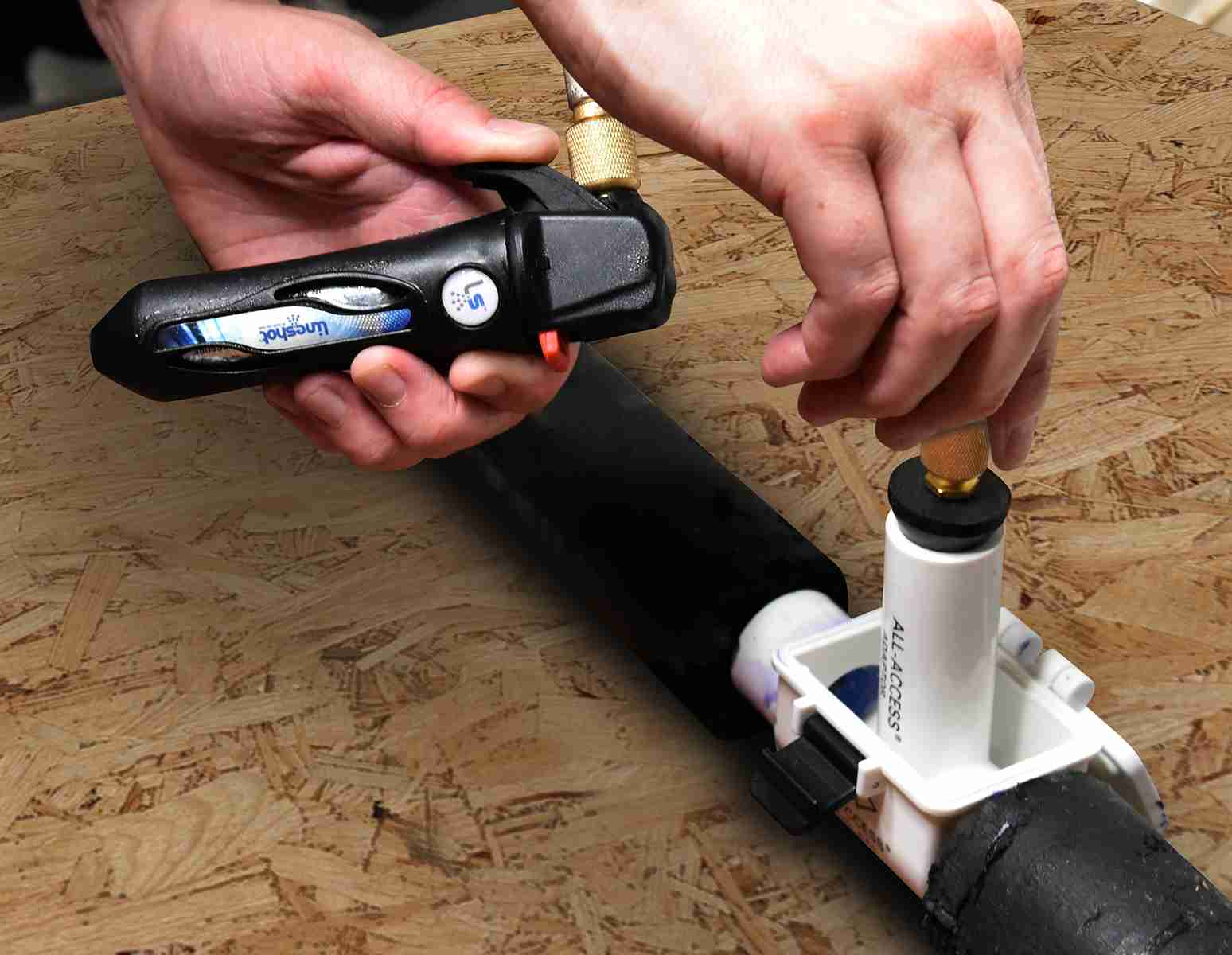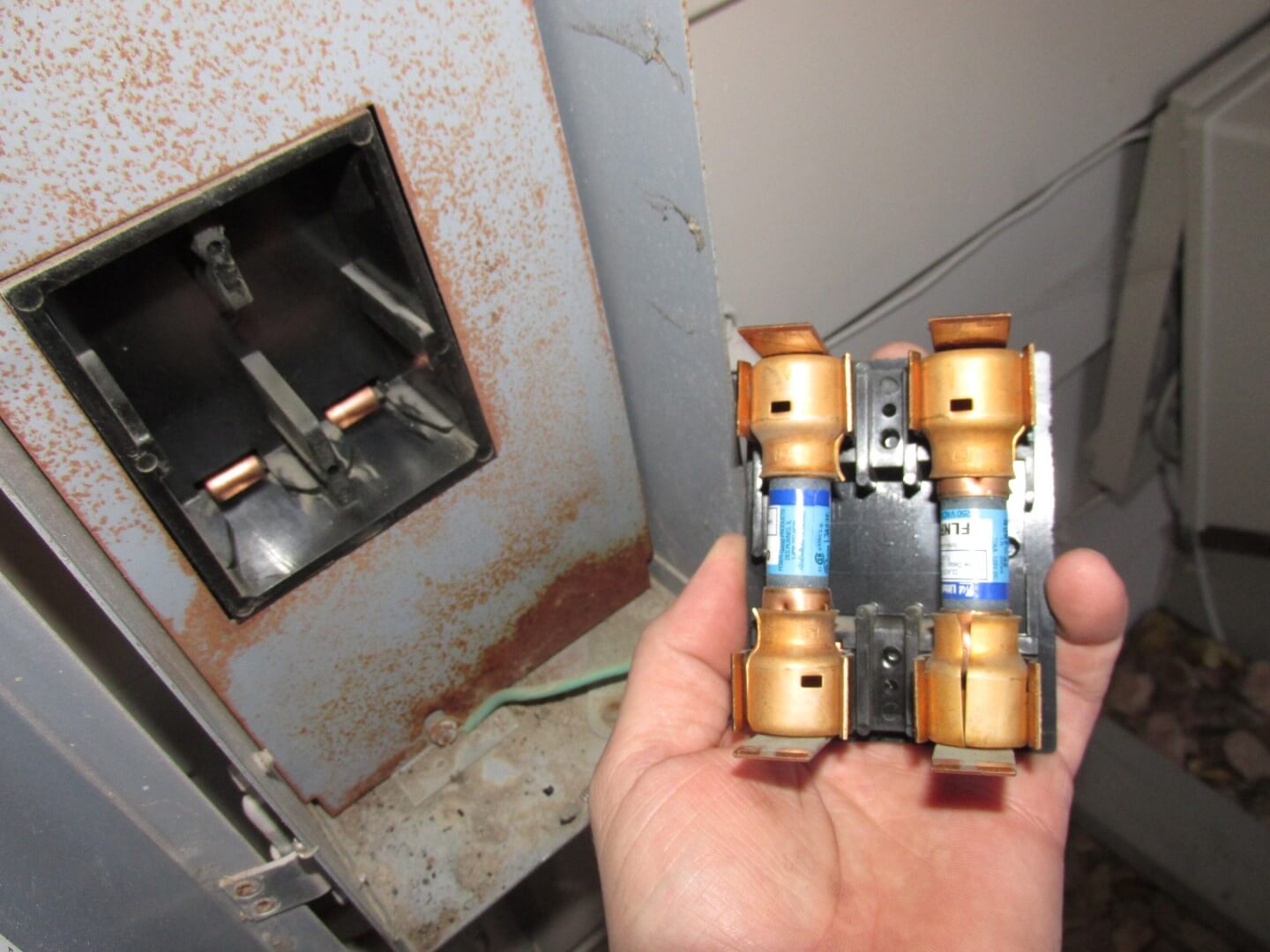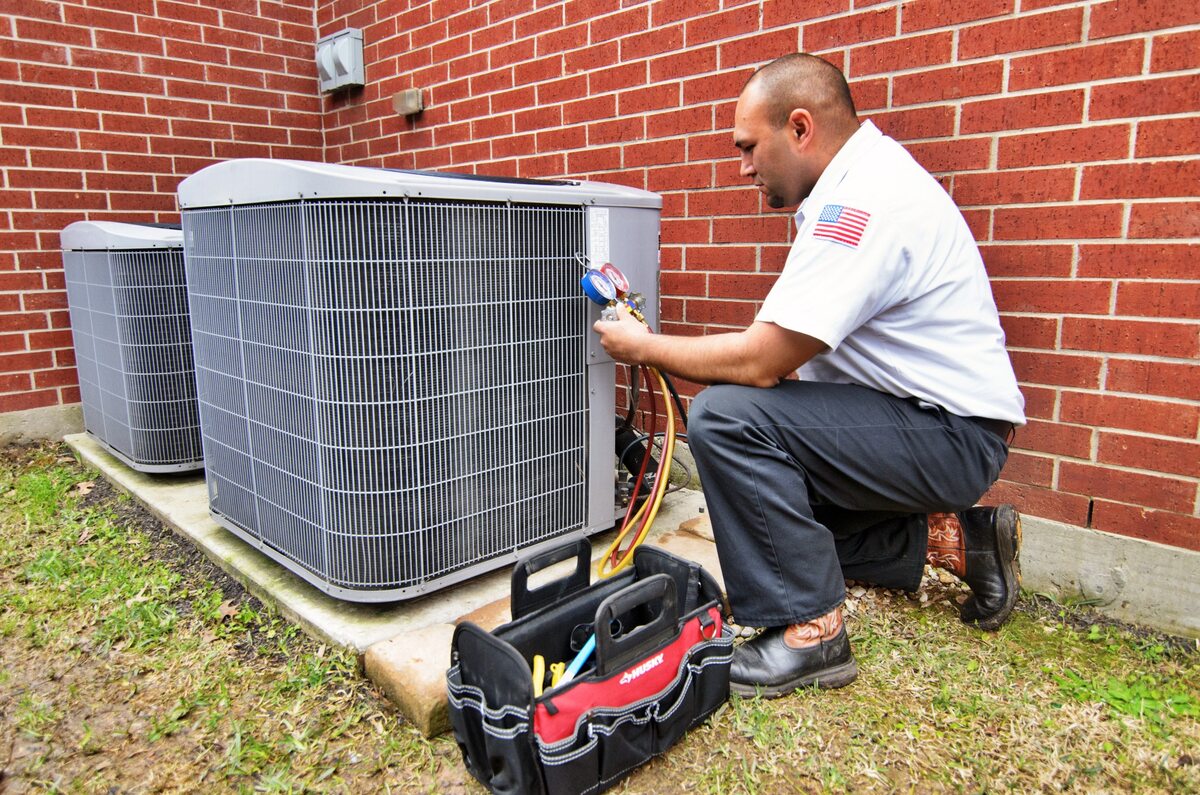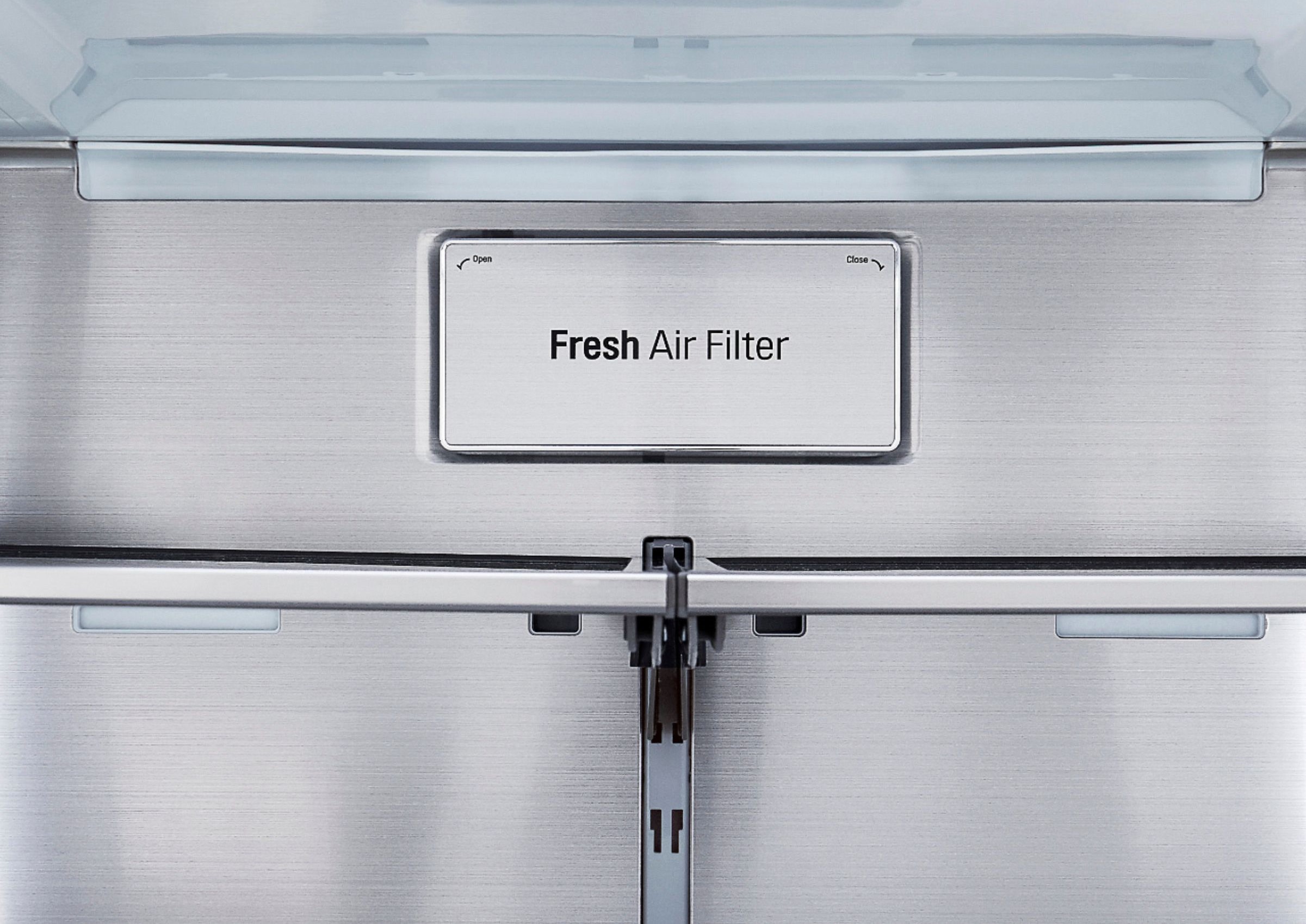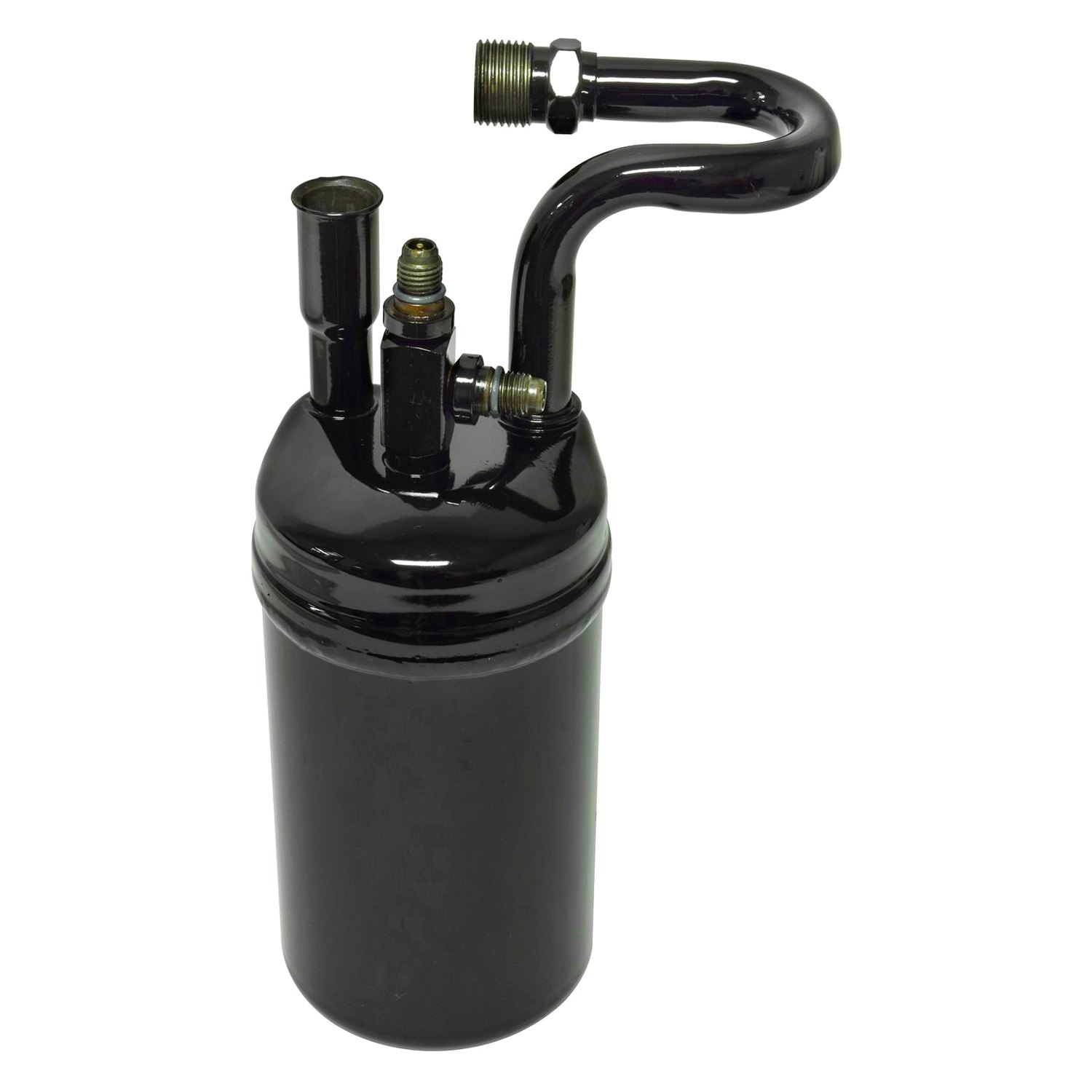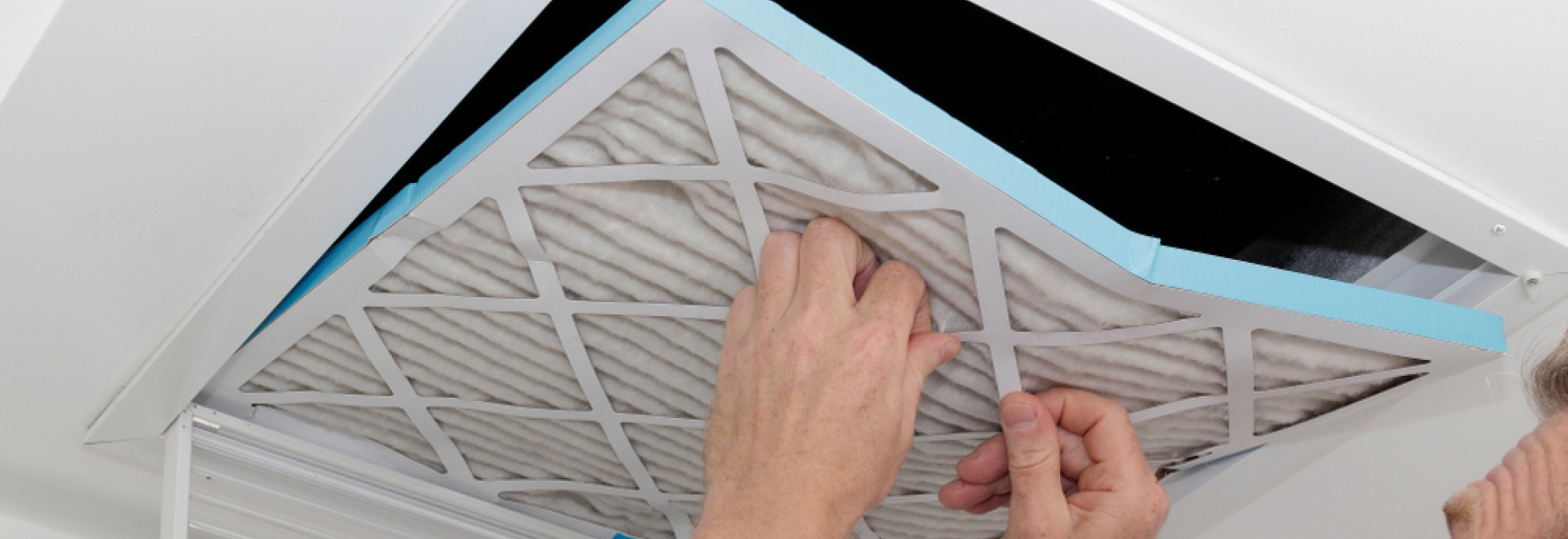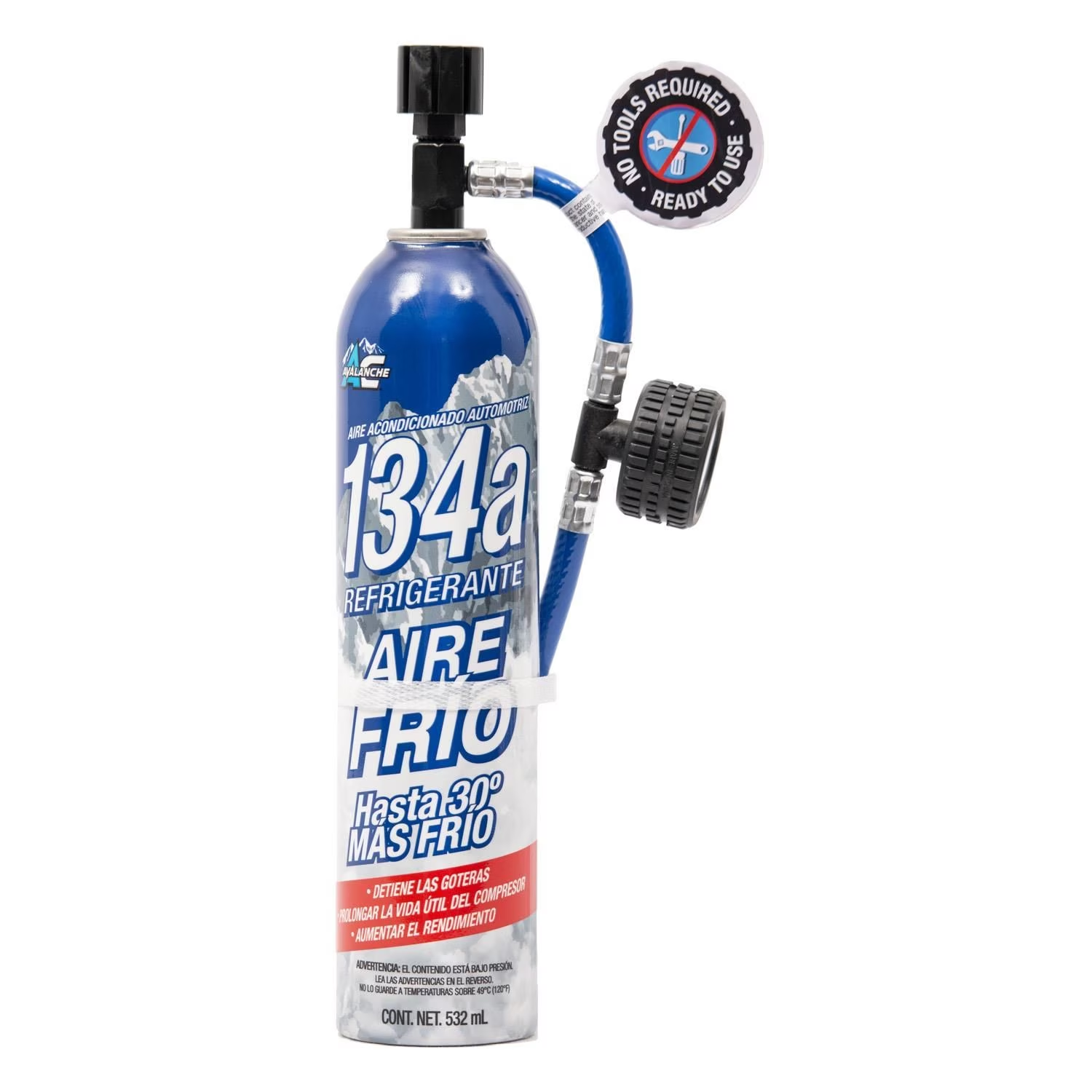Home>Home Maintenance>Which Part Changes The Pressure Of The Refrigerant In An Air Conditioning System
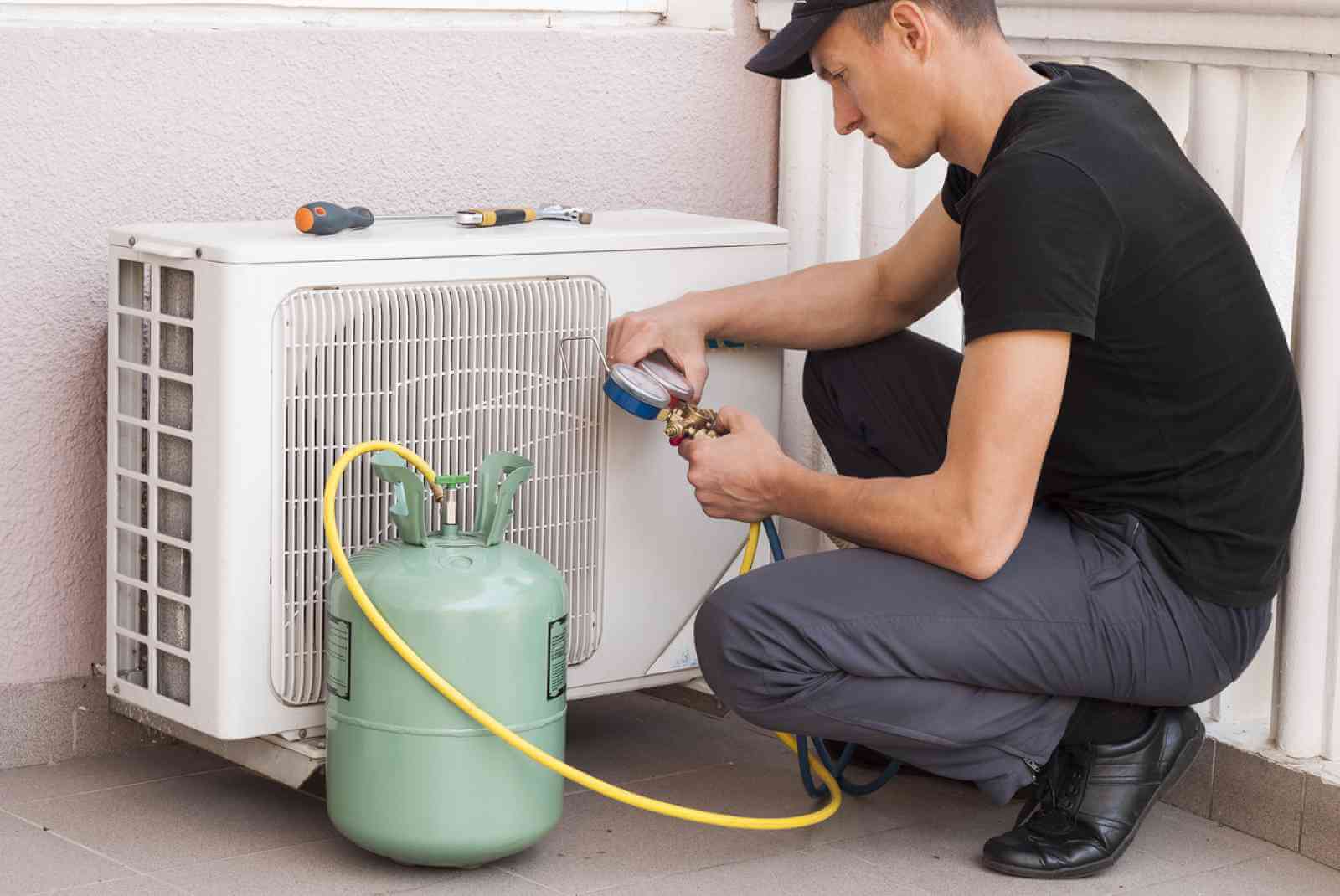

Home Maintenance
Which Part Changes The Pressure Of The Refrigerant In An Air Conditioning System
Modified: March 6, 2024
Learn about the key component responsible for regulating the pressure of the refrigerant in your air conditioning system. Enhance your home maintenance knowledge.
(Many of the links in this article redirect to a specific reviewed product. Your purchase of these products through affiliate links helps to generate commission for Storables.com, at no extra cost. Learn more)
Introduction
Welcome to the world of air conditioning systems, where comfort meets technology. Air conditioning has become an integral part of our lives, providing relief from scorching summers and maintaining a comfortable indoor environment. But have you ever wondered how these systems work?
At the heart of an air conditioning system lies the refrigerant, a special fluid that plays a crucial role in cooling the air. The refrigerant undergoes a series of processes in the system, including changes in pressure, which are essential for the system to function effectively.
In this article, we will delve into the intricate details of air conditioning systems and focus specifically on the part that changes the pressure of the refrigerant. By understanding this vital component, you will gain a deeper insight into how an air conditioner operates and appreciate the complexity behind its efficient cooling capabilities.
So, let’s embark on this journey together and unravel the mystery behind the pressure-changing component in an air conditioning system.
Key Takeaways:
- The compressor is like the heart of an air conditioning system, increasing the refrigerant’s pressure to create cool air by removing heat. It’s a crucial component for keeping us comfortable in hot weather.
- The condenser and expansion valve also play important roles in changing refrigerant pressure, helping the system efficiently cool indoor air. These components work together to make our air conditioners work effectively and keep us cool.
Read more: Which Is The Coldest Part Of A Refrigerator?
Basics of Air Conditioning Systems
Before we dive into the specific part that changes the pressure of the refrigerant in an air conditioning system, let’s first understand the basic functioning of these systems. An air conditioner works by removing heat from the indoor air and transferring it outside, leaving behind cool and comfortable air indoors.
The key components of an air conditioning system include the compressor, condenser, expansion valve, and evaporator. These components work together seamlessly to create a cycle in which the refrigerant absorbs heat from the indoor air and releases it outside.
The refrigerant, a specialized fluid with low boiling and freezing points, flows through the system in a closed loop. As it passes through the different components, it undergoes changes in pressure and temperature, allowing it to extract heat from the indoor air.
Now that we have a basic understanding of how an air conditioning system operates, let’s focus on the part that is responsible for changing the pressure of the refrigerant – the compressor.
The Role of the Compressor in Changing Refrigerant Pressure
The compressor is often referred to as the heart of an air conditioning system. It plays a vital role in the pressure-changing process of the refrigerant. The compressor is a mechanical device that increases the pressure of the refrigerant, causing it to become hot and high-pressure gas.
When the refrigerant enters the compressor, it is in a low-pressure and low-temperature state. The compressor compresses the refrigerant by reducing its volume, which in turn increases its pressure and temperature. This high-pressure gas then travels to the condenser, where it releases heat to the surroundings and transforms into a high-pressure liquid.
The compressor works on the principle of vapor compression refrigeration cycle. It uses a motor-driven piston, scroll, or rotary mechanism to pressurize the refrigerant. By doing so, the compressor initiates the heat transfer process, enabling the air conditioning system to remove heat from the indoor air.
Now that we understand the role of the compressor in changing the refrigerant’s pressure, let’s move on to the next component that impacts this process – the condenser.
The Role of the Compressor in Changing Refrigerant Pressure
The compressor is often referred to as the heart of an air conditioning system. It plays a vital role in the pressure-changing process of the refrigerant. The compressor is a mechanical device that increases the pressure of the refrigerant, causing it to become hot and high-pressure gas.
When the refrigerant enters the compressor, it is in a low-pressure and low-temperature state. The compressor compresses the refrigerant by reducing its volume, which in turn increases its pressure and temperature. This high-pressure gas then travels to the condenser, where it releases heat to the surroundings and transforms into a high-pressure liquid.
The compressor works on the principle of vapor compression refrigeration cycle. It uses a motor-driven piston, scroll, or rotary mechanism to pressurize the refrigerant. By doing so, the compressor initiates the heat transfer process, enabling the air conditioning system to remove heat from the indoor air.
Essentially, the compressor creates a pressure difference between the evaporator and the condenser. The low-pressure refrigerant gas from the evaporator is sucked into the compressor, where it is compressed. This compression increases the pressure, causing the refrigerant to become highly pressurized and rapidly gain heat energy.
The compressed refrigerant then moves to the condenser, which is located outside of the living space, such as in the outdoor unit of a split air conditioning system. In the condenser, the high-pressure gas cools down and releases heat to the surroundings. As a result, the refrigerant condenses into a high-pressure liquid.
After leaving the condenser, the high-pressure liquid refrigerant passes through the expansion valve, which is the next component we will discuss. The expansion valve controls the flow of the refrigerant and further reduces its pressure, leading to the creation of a low-pressure and low-temperature liquid-gas mixture.
In summary, the compressor in an air conditioning system is responsible for increasing the pressure of the refrigerant. This pressurization creates a temperature difference that facilitates the removal of heat from the indoor air. Without the compressor, the refrigerant would not reach the required pressure to effectively cool the air, making it a critical component in the overall functionality of the system.
Now that we have a clear understanding of the compressor’s role, let’s move on to the next component that impacts the pressure of the refrigerant – the condenser.
Understanding the Condenser and its Impact on Refrigerant Pressure
The condenser is a crucial component in an air conditioning system that works hand in hand with the compressor. Its main function is to release heat from the hot, high-pressure gas refrigerant and convert it into a high-pressure liquid state.
Once the refrigerant leaves the compressor as a hot, high-pressure gas, it enters the condenser. The condenser is typically located in the outdoor unit of a split air conditioning system or integrated into a single unit for window or portable air conditioners.
Inside the condenser, the hot refrigerant gas flows through a network of coils or tubes. These coils or tubes are designed to maximize surface area and promote efficient heat transfer. As the hot gas comes into contact with the cooler air outside, it releases heat energy, causing the refrigerant to undergo a phase change from gas to liquid.
The release of heat from the refrigerant to the surroundings during this phase change is what allows the air conditioning system to remove heat from the indoor air. It’s important to note that the condenser operates at a high pressure to facilitate the conversion of the refrigerant from a gas to a liquid state.
The condenser works by transferring the heat absorbed from the indoor air to the outdoor environment. This heat transfer occurs through a process called condensation, where the refrigerant releases latent heat as it changes from a gas to a liquid state.
As the refrigerant condenses, its pressure remains high due to the pressure created by the compressor. The high-pressure liquid refrigerant then flows to the expansion valve, which is the next component we will discuss. The expansion valve plays a vital role in regulating the flow of the refrigerant and further reducing its pressure.
In summary, the condenser in an air conditioning system is responsible for releasing heat from the compressed refrigerant and converting it into a high-pressure liquid state. This crucial step allows the system to effectively remove heat from the indoor air, creating a cooler and more comfortable environment.
Now that we have explored the condenser’s role and impact on refrigerant pressure, let’s move on to the next component in the process – the expansion valve.
The part that changes the pressure of the refrigerant in an air conditioning system is the compressor. It compresses the low-pressure gas into a high-pressure gas, which is essential for the cooling process.
Exploring the Expansion Valve and its Effect on Refrigerant Pressure
The expansion valve is a small, yet essential component in an air conditioning system. Its primary function is to regulate the flow of the high-pressure liquid refrigerant into the evaporator, where it undergoes a phase change and absorbs heat from the indoor air.
After the high-pressure liquid refrigerant leaves the condenser, it enters the expansion valve. The expansion valve is typically located between the condenser and the evaporator, acting as a gateway for the refrigerant to enter into the evaporator coil.
Inside the expansion valve, there is a small orifice or control mechanism that restricts the flow of the refrigerant. By narrowing the passage through which the refrigerant can pass, the expansion valve creates a pressure drop in the system. This pressure drop causes the refrigerant to rapidly expand and move from a high-pressure liquid state to a low-pressure, low-temperature liquid-gas mixture.
The effect of the expansion valve on the refrigerant pressure is twofold. Firstly, it reduces the pressure of the refrigerant, allowing it to vaporize and absorb heat more efficiently in the evaporator. Secondly, it controls the flow of the refrigerant into the evaporator, ensuring a balanced and controlled heat absorption process.
As the refrigerant enters the evaporator as a low-pressure, low-temperature mixture, it absorbs heat from the indoor air flowing over the evaporator coils. This heat absorption process causes the refrigerant to evaporate into a low-pressure gas state while removing heat from the surroundings.
The expansion valve plays a crucial role in maintaining the balance between the heat absorption capacity of the evaporator and the cooling demands of the indoor space. It modulates the flow of the refrigerant based on the cooling requirements, ensuring optimal cooling efficiency.
Now that we have explored the impact of the expansion valve on refrigerant pressure and the pivotal role it plays in the system, let’s move on to the next component – the evaporator.
Read more: What Is Refrigeration Air Conditioning
The Evaporator’s Influence on Refrigerant Pressure in an Air Conditioning System
The evaporator is a critical component in an air conditioning system that works in conjunction with the compressor, condenser, and expansion valve to maintain the desired temperature indoors. Its primary function is to facilitate the heat transfer process by absorbing heat from the indoor air and causing the refrigerant to undergo a phase change from a low-pressure liquid-gas mixture to a low-pressure gas state.
As the low-pressure liquid-gas mixture enters the evaporator coil from the expansion valve, it encounters a flow of warm indoor air. The evaporator coil, typically located in the indoor unit of a split air conditioning system, provides a large surface area for heat absorption.
During the heat absorption process, the warm indoor air flows over the evaporator coils, transferring its heat energy to the refrigerant within the coils. This heat exchange causes the refrigerant to evaporate, converting it from a low-pressure liquid-gas mixture to a low-pressure gas state.
As the refrigerant evaporates, it absorbs a significant amount of heat from the indoor air, which effectively cools the air. This cooled air is then distributed back into the indoor space, creating a comfortable environment.
The evaporator’s influence on refrigerant pressure is significant. By absorbing heat and promoting the phase change of the refrigerant, the evaporator helps to maintain a low-pressure gas state. This low-pressure gas then returns to the compressor to begin the refrigeration cycle once again.
The efficiency and effectiveness of the evaporator in cooling the indoor air depend on factors such as the surface area of the evaporator coils, the airflow over the coils, and the temperature difference between the indoor air and the refrigerant. These factors determine how much heat can be absorbed from the indoor air and how effectively the refrigerant can evaporate.
It’s important to note that the evaporator operates at a low pressure to facilitate the heat absorption process. This low-pressure environment allows the refrigerant to vaporize at a lower temperature, making it more efficient at absorbing heat from the indoor air.
In summary, the evaporator plays a crucial role in an air conditioning system by absorbing heat from the indoor air and causing the refrigerant to evaporate. This phase change enables the system to effectively cool the air and create a comfortable indoor environment. The evaporator’s influence on refrigerant pressure is essential in maintaining the refrigeration cycle and ensuring optimal cooling efficiency.
With a comprehensive understanding of the compressor, condenser, expansion valve, and evaporator, we have gained insight into the components that change the pressure of the refrigerant in an air conditioning system. These components work together seamlessly to create a cycle that removes heat from the indoor air and provides us with cool and comfortable environments.
Next time you enjoy the refreshing coolness of your air conditioning system, take a moment to appreciate the intricate processes at work and the complex interplay of these components that make it all possible.
Conclusion
Understanding the components and processes behind the pressure changes in an air conditioning system can give us a deeper appreciation for the technology that keeps us cool and comfortable during the summer months. The compressor, condenser, expansion valve, and evaporator all play vital roles in altering the pressure of the refrigerant as it moves through the system.
The compressor, often referred to as the heart of the system, increases the pressure of the refrigerant, transforming it into a hot, high-pressure gas. This sets the stage for the condenser, where the refrigerant releases heat and condenses into a high-pressure liquid. The expansion valve then regulates the flow of the refrigerant into the evaporator, causing it to undergo a phase change and absorb heat from the indoor air. Finally, the evaporator completes the cycle by transforming the refrigerant into a low-pressure gas, ready to be compressed once again.
The efficient operation of these components is crucial for an air conditioning system to cool the indoor air effectively. Each component must work in harmony, creating the right balance of pressure and temperature changes to ensure optimal cooling efficiency.
As we reflect on the intricate processes and components at work within an air conditioning system, it becomes evident that they are much more than mere appliances. They are a testament to human ingenuity and technological advancements, providing us with comfortable living and working environments.
So the next time you enjoy the cool breeze of your air conditioner, take a moment to appreciate the inner workings behind its operation. From the pressure-changing components to the heat transfer processes, every aspect contributes to your comfort in the summer heat.
By understanding the importance of these components and the role they play in altering refrigerant pressure, we can make informed decisions when it comes to maintenance, repairs, and upgrades for our air conditioning systems. And with proper care and attention, we can ensure that our systems continue to provide us with comfort and relief for years to come.
Remember, the pressure-changing components are the unsung heroes of our air conditioning systems, working tirelessly to keep us cool and comfortable in even the hottest of summers.
Frequently Asked Questions about Which Part Changes The Pressure Of The Refrigerant In An Air Conditioning System
Was this page helpful?
At Storables.com, we guarantee accurate and reliable information. Our content, validated by Expert Board Contributors, is crafted following stringent Editorial Policies. We're committed to providing you with well-researched, expert-backed insights for all your informational needs.
